Two years ago I received a note from Pete in Virginia about his work grafting dwarf and cork-bark black pines. He was curious if his grafting was appropriate for bonsai so he sent me some samples to evaluate.
I’ve enjoyed working with these trees and would like to share some notes about each. They are Pinus thunbergii ‘Nishiki Eechee,’ ‘Gan Seki Sho,’ and ‘Banshoho.’
Nishiki Eechee
The cultivar ‘Nishiki Eechee’ is a fast growing pine that begins corking at a young age. The needles are relatively long but can be reduced through training.
I don’t have enough experience with the cultivar to know how it will look when it matures, but I’d guess it’s best suited for creating medium and large sized bonsai.
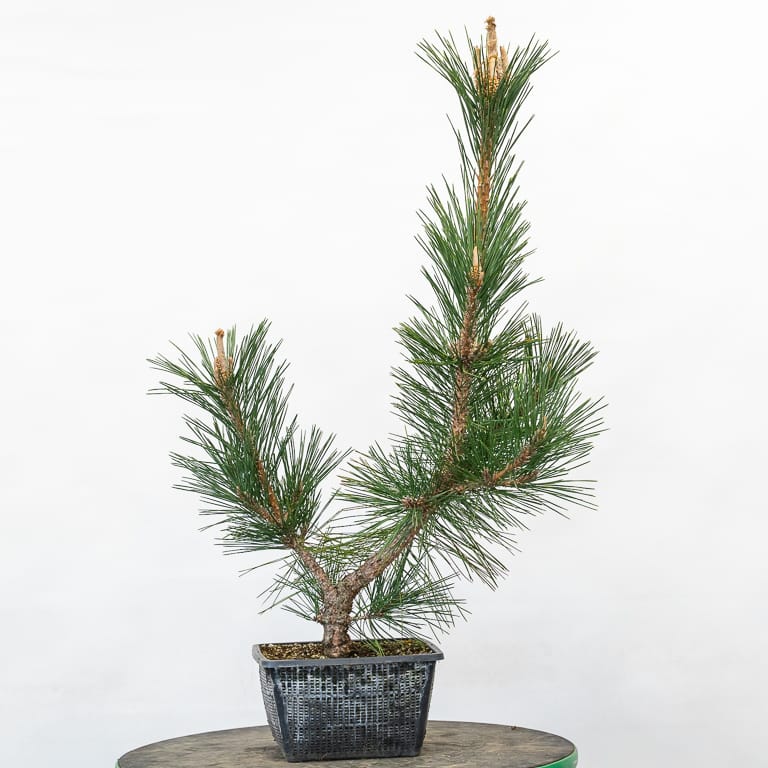
‘Nishiki Eechee’
The graft on this specimen – like all of the trees I received from Pete – was done expertly. Here’s a close-up of the trunk showing where the understock was cut away.
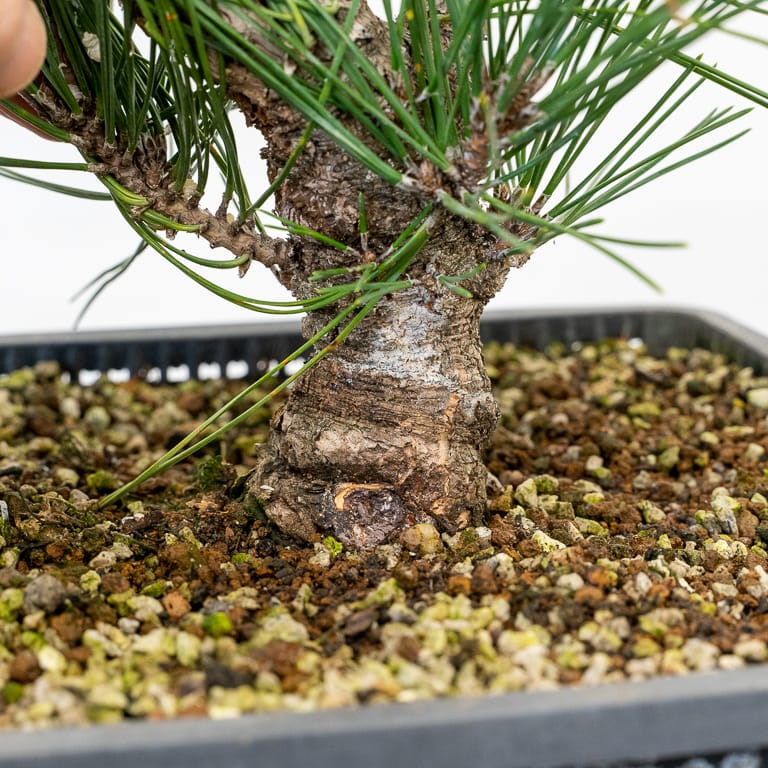
The small wound near the soil line reveals where the tree was grafted
The graft is all but invisible on the other side of the trunk.
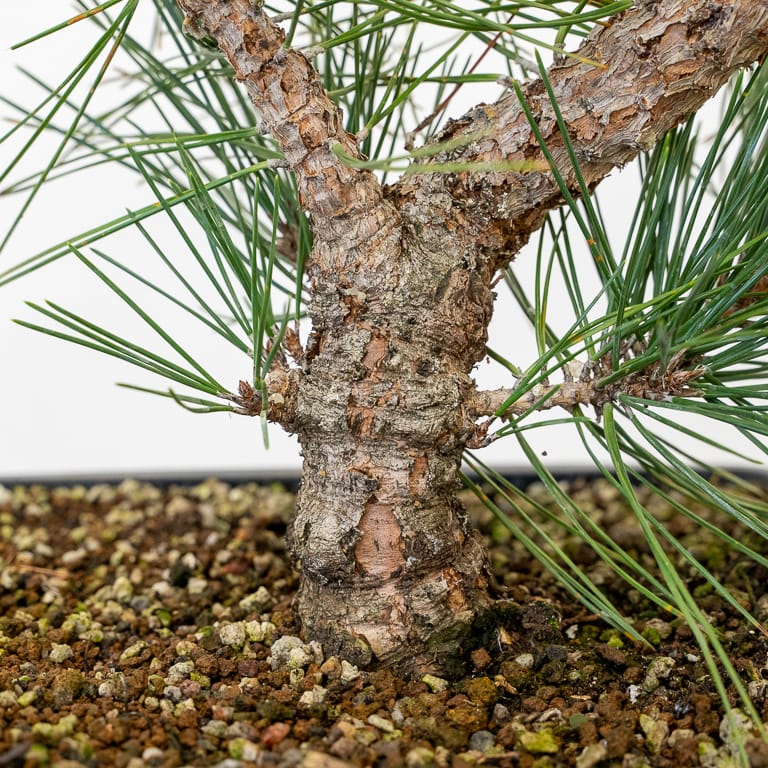
The lower trunk
Although I simply let the tree grow for the past two years, I plan to cut the straight section of the trunk next spring at decandling time.
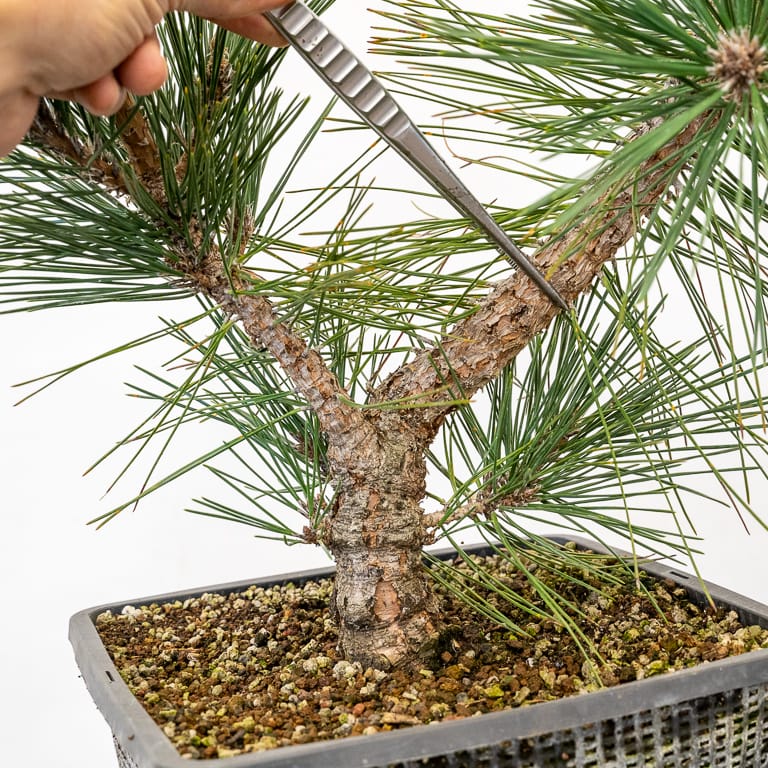
The tweezers indicate the spot where I plan to cut in spring
I hope to stimulate new buds when I cut back to this point as I’m curious how the tree will respond. I plan to train the left hand branch as the new leader.
Gan Seki Sho
The growth habit of the ‘Gan Seki Sho’ cultivar is similar to ‘Eechee Nishiki’ but it doesn’t cork up as quickly. Like ‘Eechee Nishiki,’ I expect this cultivar to be best for creating medium and large sized bonsai as the needles are relatively long.
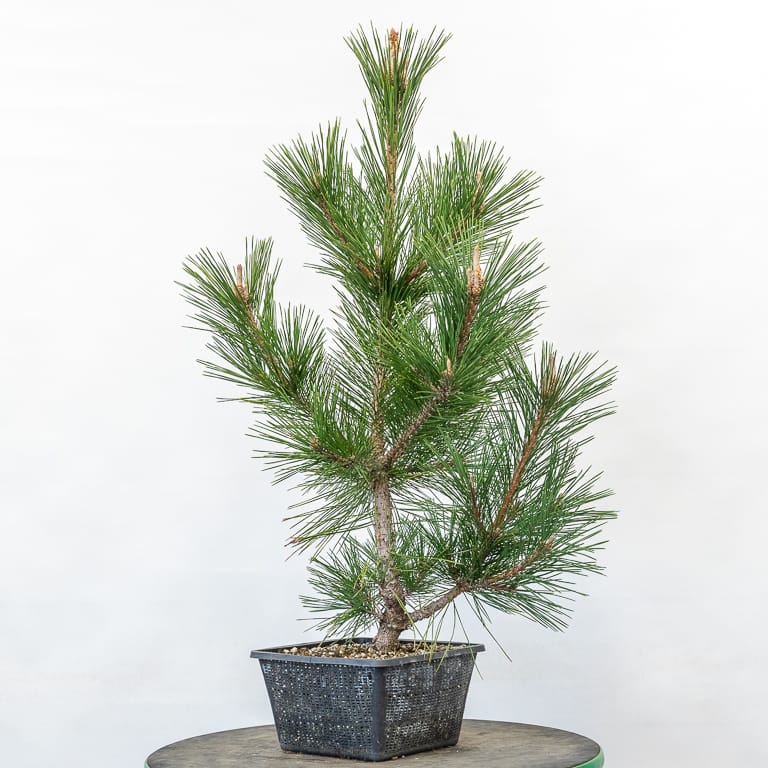
‘Gan Seki Sho’
In terms of this specimen’s training, I want to encourage the lower branches to thicken so I reduced the main leader as this will help the lower branches receive more light.
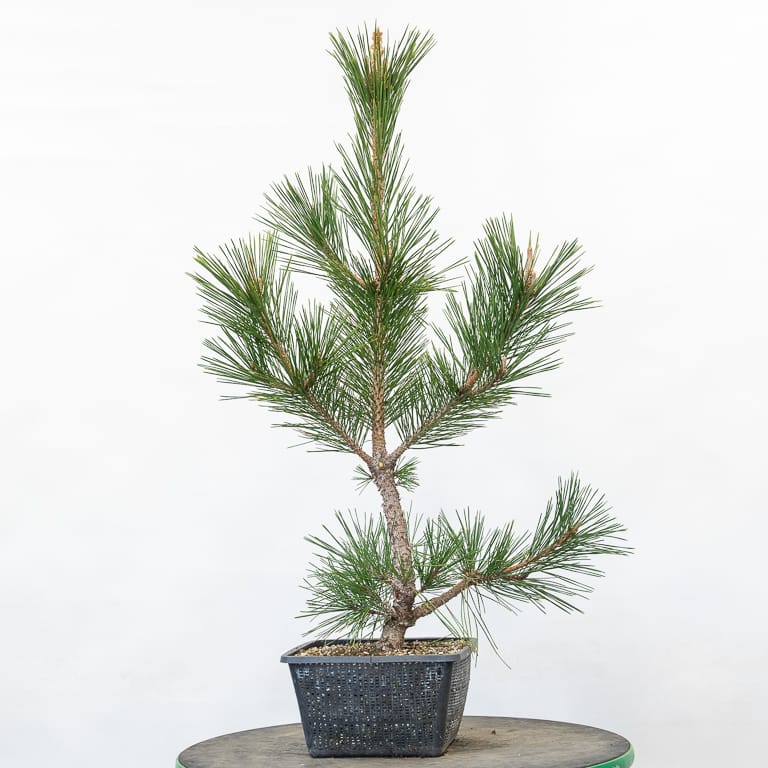
After cutback
Banshoho
Of the three cultivars I received from Pete, his ‘Banshoho’ shows great promise for cultivation as bonsai. The needles are short and the budding habit is dense.
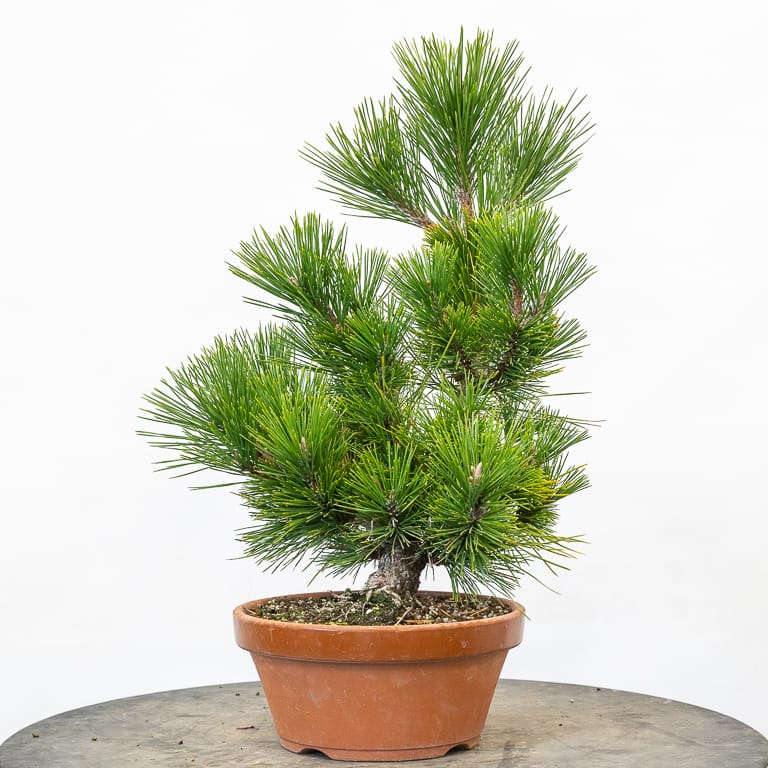
‘Banshoho’
The one caveat with such dwarf cultivars is that they can be slow to develop into larger bonsai. Although I’ve only worked with ‘Banshoho’ for two years, I’ve found it to be a vigorous grower that retains short needles even as its vigor increases.
As for the tree’s training, I removed about half of the shoots that emerged from the lower trunk and reduced the main leader to a single sacrifice branch. This will help the lower branches receive enough light to maintain the density needed to create a compact bonsai.
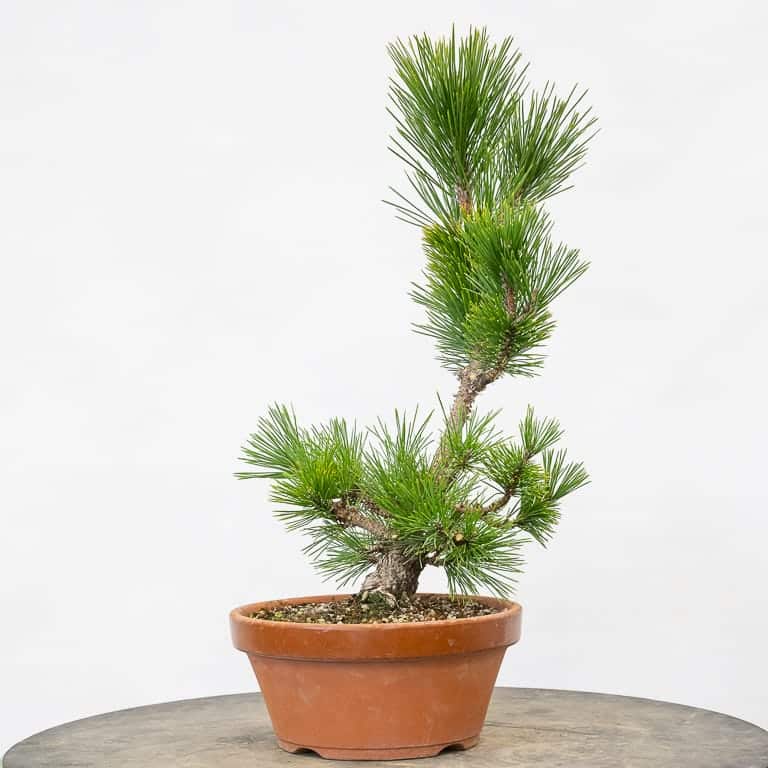
After cutback
Although I know of several growers around the country who work with black pine cultivars, I haven’t seen many mature specimens. I hope to do so before long as the more we can learn about tending these trees as mature bonsai, the better guides we’ll have as we propagate trees for future growers.
Subscribe to Bonsai Tonight
New Posts Delivered Every Tuesday and Friday
Bret B says
Jonas, always wonderful info, and the photo really help add to the information. Thanks as always.
I wanted to ask, with the thinning out of lower branches to let light in, was this work done recently during this time of year? And if so, is this the appropriate time to do so(before growing season)?
Thanks as always!
Jonas Dupuich says
Thanks Bret! Fall is the best time to do this work, but anytime up until the tree starts growing in spring also works. I started working on my pines in late October. I worked on these trees last week and will continue working on pines – cutback, wiring, and repotting – into March.